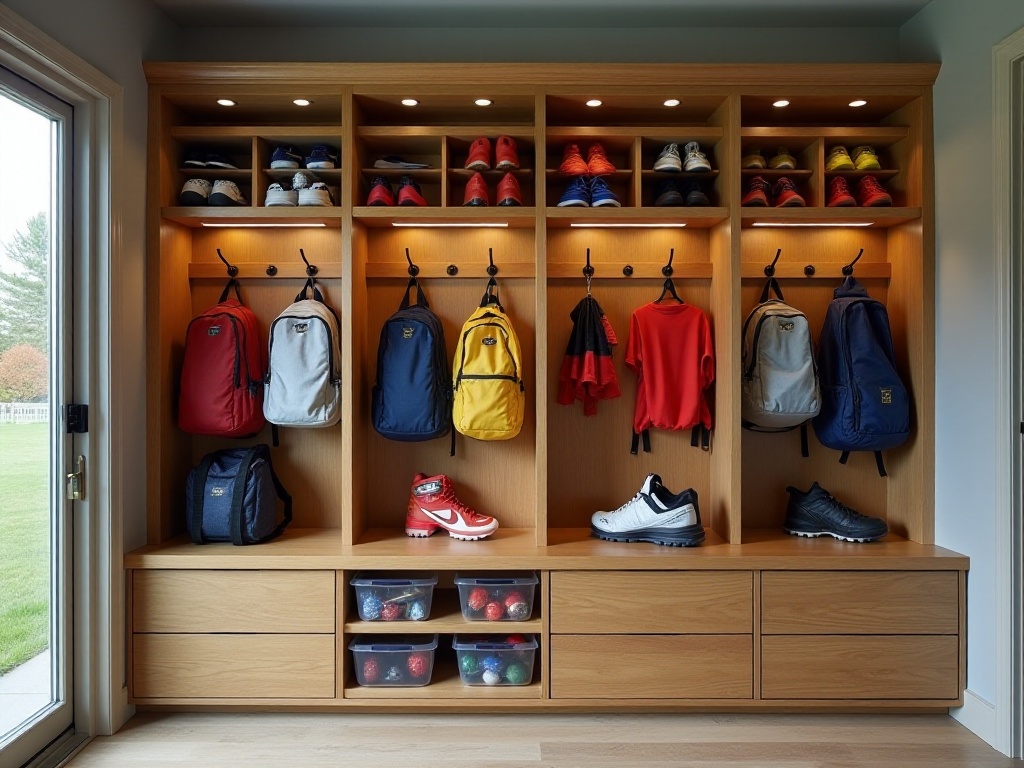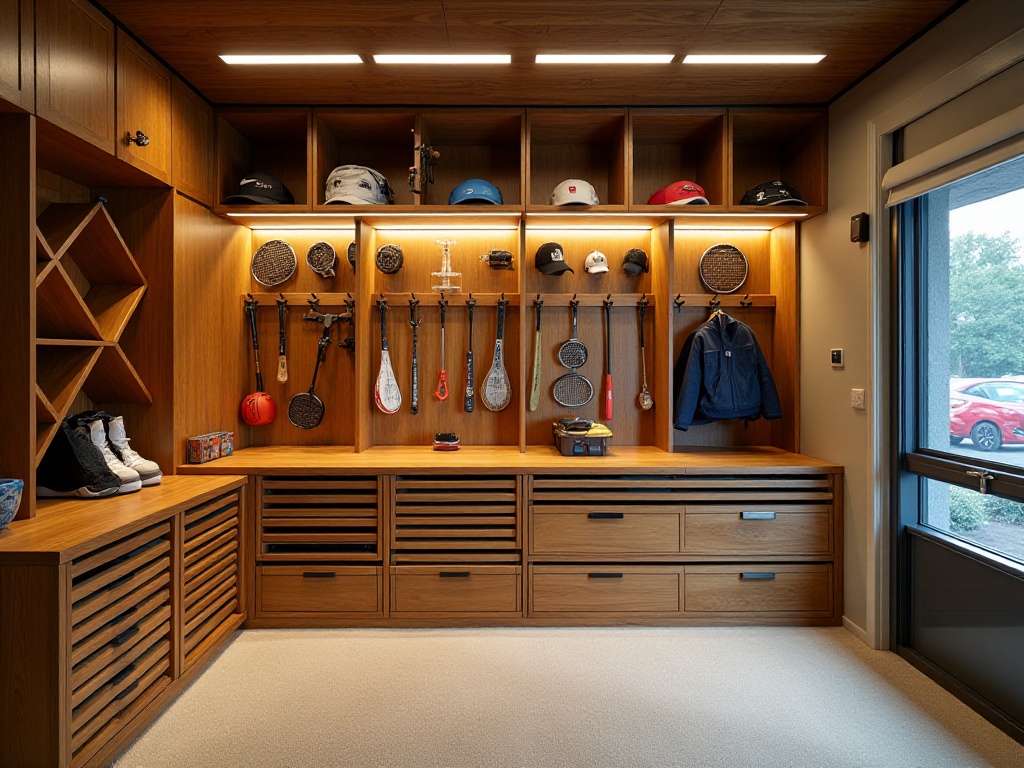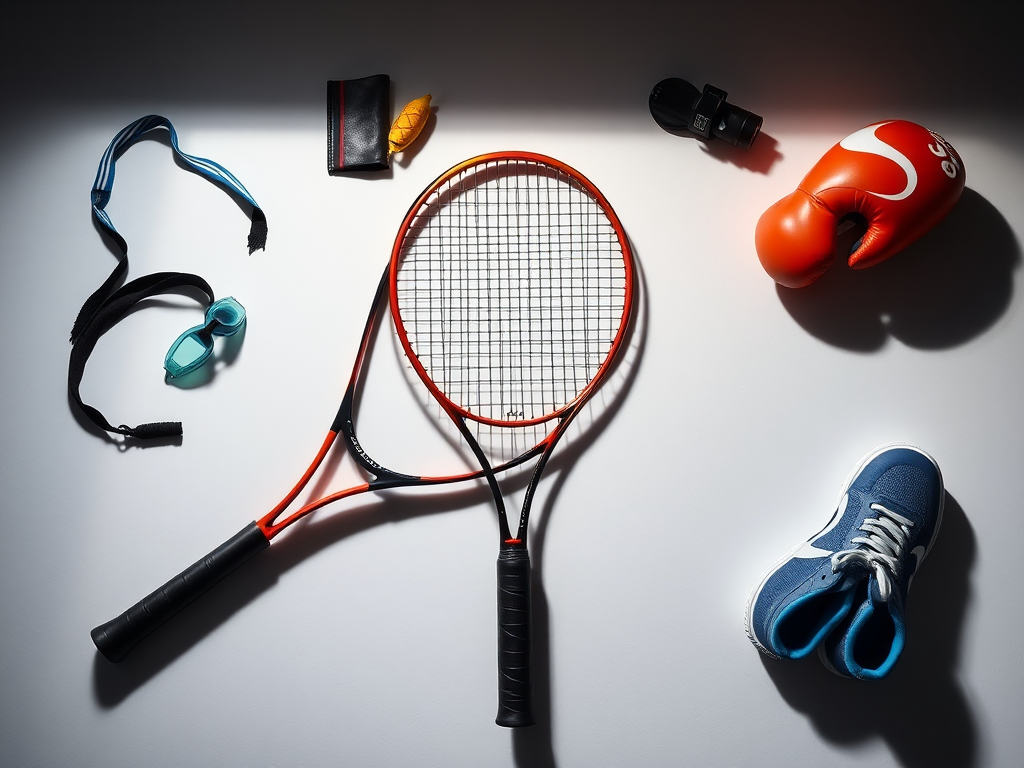Opening Thoughts
As a sports enthusiast, I deeply understand the pain points of storing athletic equipment. After each workout, I'm too exhausted to clean up, resulting in sports gear scattered around the house like a battlefield. The tennis racket lies abandoned on the couch, the yoga mat is haphazardly rolled up, and the basketball has disappeared under the bed. Worst of all, there have been several times when I had to step over various pieces of equipment just to find what I needed - it's truly a disaster!
I've actually been tortured by this chaos for a long time until I finally decided to get organized. After years of trial and improvement, I've developed a pretty practical storage solution. Today I'll share these experiences with you, hoping to help solve similar frustrations.
Understanding Equipment
When it comes to sports equipment, many people's first thought might be dumbbells and treadmills. But actually, the range of sports equipment is much broader! Those dad shoes you're wearing? Yes, those are sports equipment. Your favorite yoga clothes? That's right, those count too. Even the badminton shuttlecock you casually tossed onto the balcony is part of the sports equipment family. Simply put, anything related to sports, whether worn, carried, or used, all counts as sports equipment.
Speaking of which, I can't help but share some interesting history about sports equipment. For instance, basketball was originally played with a soccer ball and a peach basket as the hoop, which is quite amusing to think about. And tennis rackets were initially made of solid wood, which were not only incredibly heavy but also prone to breaking. Today's sports equipment is much more advanced, with carbon fiber, titanium alloys, and various new technologies emerging constantly. Like the smart basketball I bought the other day - it can automatically record shooting data, which is incredibly advanced!
However, truthfully, as sports equipment has evolved, our storage challenges have grown accordingly. What used to be just a ball and a racket has now become a collection of gear for each sport. Take rock climbing, which I've recently gotten into - just the different types of holds alone can fill an entire drawer, not to mention the harness, chalk bag, and climbing shoes, which can completely overwhelm my storage room.
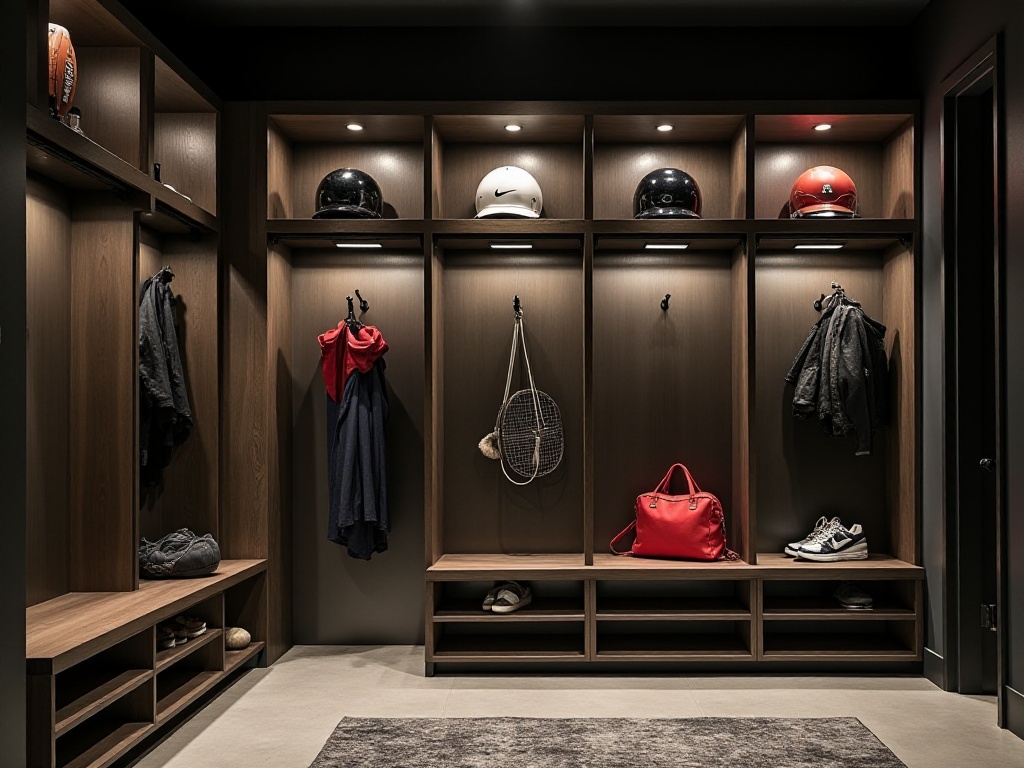
Space Planning
When it comes to space planning, I've learned quite a few lessons the hard way. At first, I just stuffed all my sports equipment into the storage room, calling it centralized management. The result? Every time I needed something, I had to dig through everything, and finding a tennis racket felt like archaeology. Later I realized that storage is actually an art, and the key is maximizing space utilization.
Speaking of space utilization, walls and ceilings are the most easily overlooked areas. I remember when I first discovered this secret, it felt like finding a new world. I was browsing online when I saw someone who had installed a whole wall of hooks in their garage, looking incredibly neat. I thought right away: isn't this exactly what I need?
So I immediately took action and installed an adjustable hook system in my storage room. The best thing about this system is its flexibility - you can adjust it however you want. I also bought a bunch of S-hooks, which are absolute storage lifesavers. Can you imagine? Now all my helmets, protective gear, and sports bags hang neatly on the wall, looking particularly pleasing to the eye.
But wall space alone wasn't enough, so I set my sights on the ceiling - another prime real estate. After extensive online research, I chose a track storage system. The biggest advantage of this system is that it can slide freely according to your needs, placing things wherever you want. Now I store all my seasonal equipment, like winter skiing gear, in storage boxes on the ceiling. Each box is labeled to save time searching.
Oh, here's a small tip to share. When installing these storage systems, you must pay attention to weight capacity. I made a mistake the first time by using regular expansion screws, and everything fell down after just two days. Later, I switched to professional mounting hardware, which finally solved the problem completely.
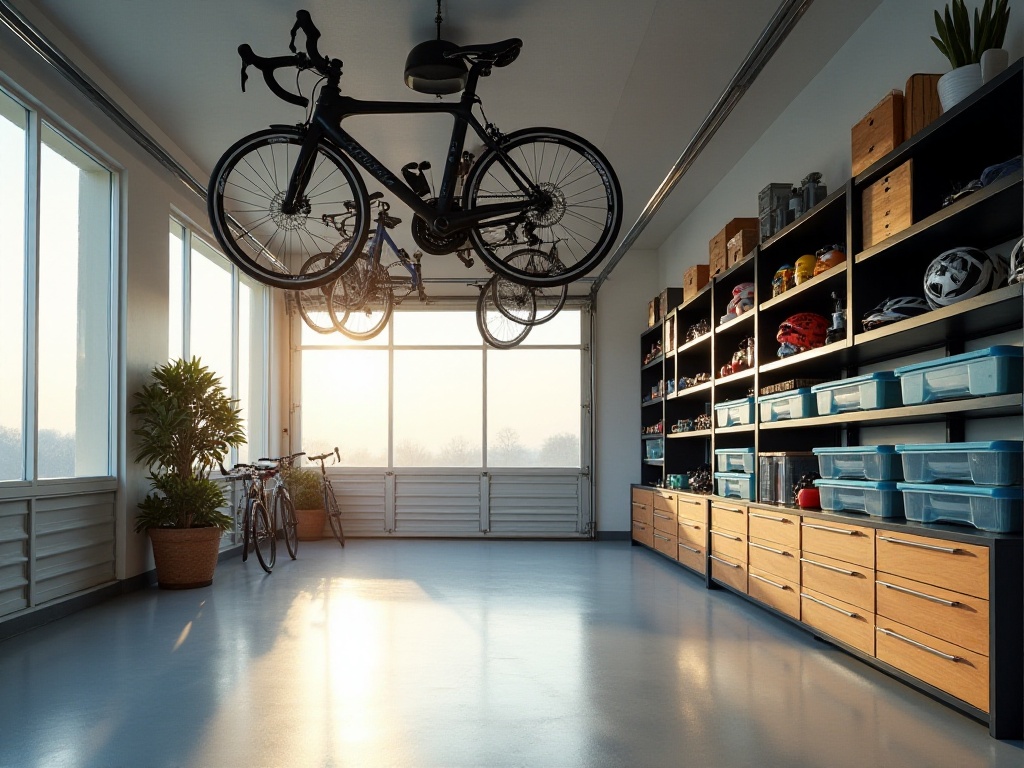
Categorized Storage
When it comes to categorized storage, I have quite a few special techniques. At first, I would just throw all ball equipment into baskets, which made finding anything like searching for a needle in a haystack. Later, I had an inspiration and made a ball storage rack using wooden boards and elastic cords. The best thing about this rack is that each type of ball has its own designated spot, so you never have to worry about finding them.
I divided this storage rack into several levels. The top level is for basketballs since they're the largest; the middle is for soccer balls and volleyballs; and the bottom is for tennis balls and shuttlecocks. Each level is secured with elastic cords to prevent the balls from rolling around. Plus, the tension of the elastic cords can be adjusted, which is very convenient.
Storing large equipment is a major challenge, especially bicycles. I have two bikes, a road bike and a mountain bike, which used to just lean against the wall corner, not only taking up space but also getting scratched. Later, I installed professional bike racks on the garage wall, which not only saved space but also looks quite stylish.
Bike accessories are also an issue. I installed a small rack next to the bikes specifically for helmets, gloves, and other accessories. Now when I go riding, I can see all the equipment I need at a glance, no more searching around.
Oh, and here's a particularly useful tip. If you have yoga mats or exercise mats, I recommend getting a dedicated storage strap. I used to just roll them up casually, which led to the mats becoming deformed over time. After using storage straps, not only do the mats maintain their shape, but they're also stored more neatly.
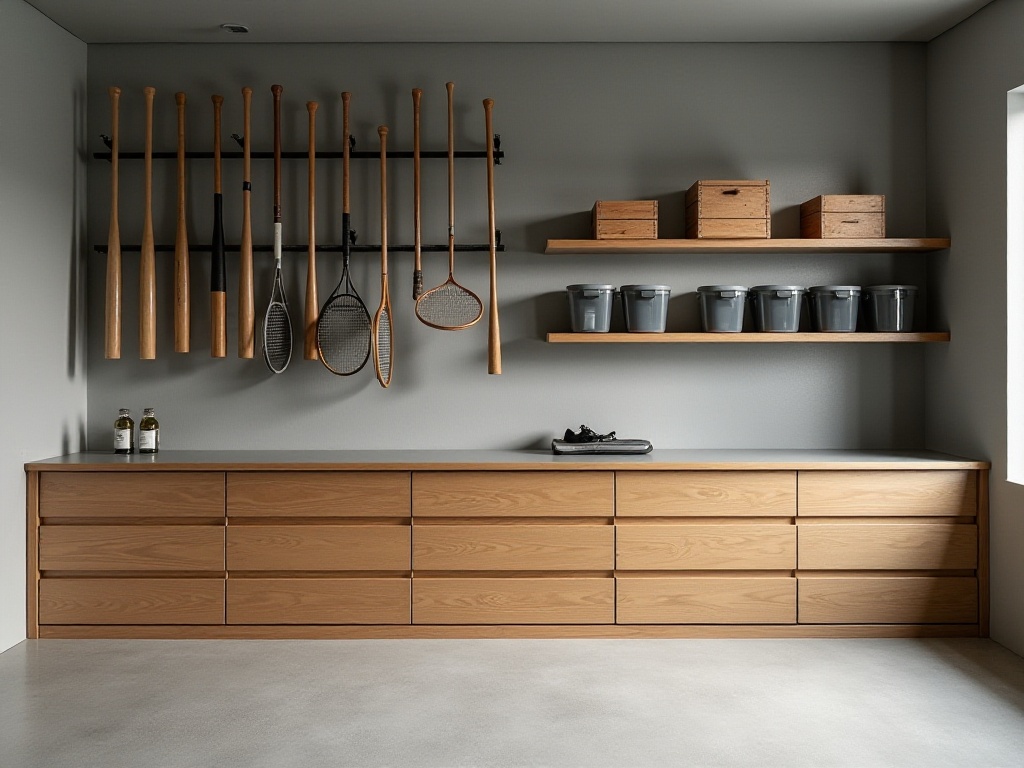
Cleaning and Maintenance
When it comes to maintenance, I've learned quite a few lessons the hard way. When I first started sports, I didn't pay any attention to equipment maintenance. After exercising, I would barely wipe things down, sometimes not even bothering to do that. The result was predictable - equipment wore out extremely quickly and needed replacing in no time.
Later I realized that equipment maintenance is really important. Different equipment needs different maintenance methods. For example, with tennis rackets, you need to clean them with a soft cloth after each use, especially the grip area, as it's most likely to accumulate sweat. If you notice any loose strings, get them repaired by a professional promptly, or they'll easily break.
Ball maintenance also has its techniques. For inflatable balls like basketballs and soccer balls, regularly check the air pressure. Too much pressure can cause the ball to burst, while too little affects performance. Also, pay attention to storage conditions, avoiding direct sunlight and humid places. I once left a basketball on the balcony, and it got deformed from sun exposure.
Sports clothing maintenance is also important. Many people might think you can just wash sports clothes any way you like, but that's not the case. Most sports clothing is made of quick-dry material, and high water temperatures can damage the fabric's functionality. Now I use mild detergent and keep the water temperature around 30 degrees Celsius, which maintains the clothes' functionality while extending their lifespan.
Oh, and one particularly important point is regular equipment inspection. I've developed a habit of conducting a thorough check of all equipment monthly. I look for any loose parts or areas needing repair. This not only helps identify problems early but also prevents accidents during exercise.
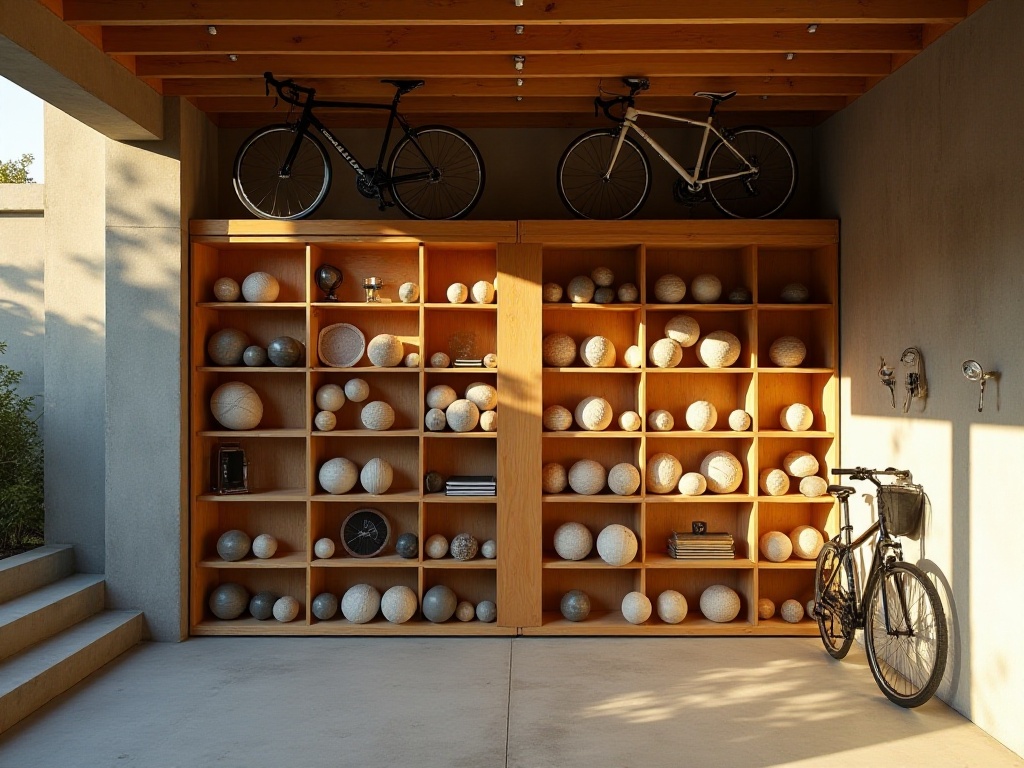
Final Words
After saying all this, the most important aspect of storing and maintaining sports equipment is developing good habits. Spending a few minutes tidying up after each workout is much easier than waiting until equipment piles up into a mountain.
After years of exploration, I finally have a relatively complete system for storing my sports equipment. Now exercising is particularly easy, with any equipment I need within arm's reach. And because of proper maintenance, the equipment's lifespan has notably increased, saving quite a bit of money.
Actually, everyone can design the most suitable storage solution based on their own situation. The important thing is to take action, make gradual adjustments, and eventually find the method that works best for you. I hope these experiences can provide some inspiration and make your sports life easier and more enjoyable!




